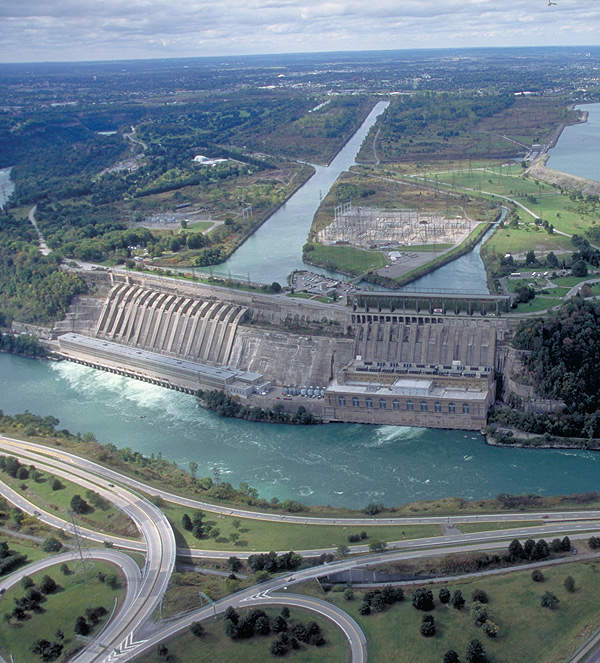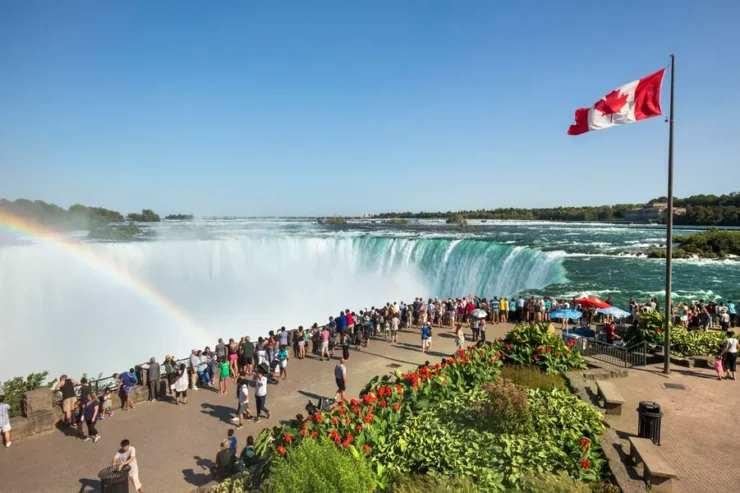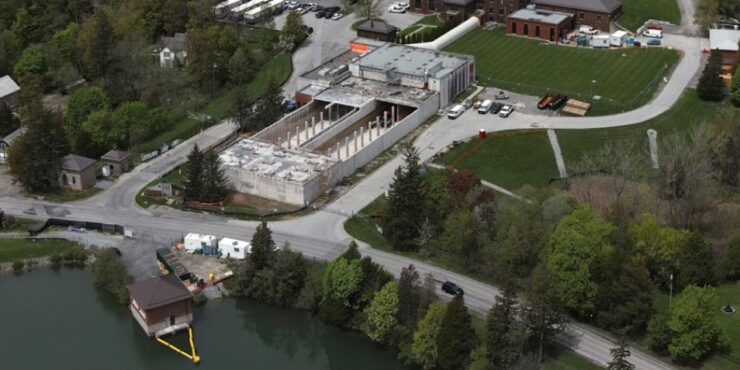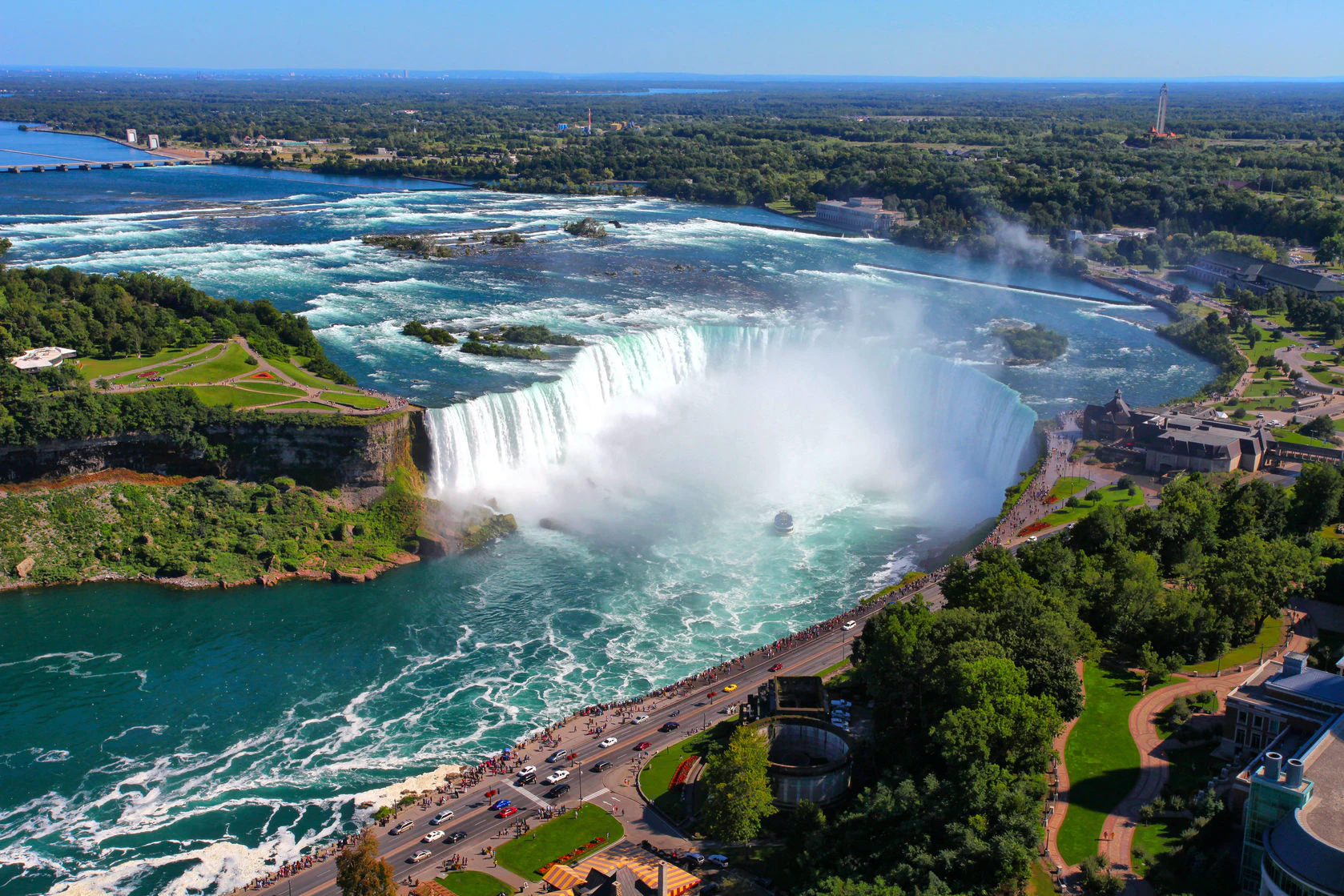Niagara Falls roars with a power that has echoed through centuries. Its thundering waters have shaped landscapes, inspired awe, and driven innovation. Beyond the breathtaking view, its historical significance has rippled across the world, influencing industries, cultures, and even geopolitics.
Key Points:
- Niagara Falls influenced global hydroelectric power development.
- It became a symbol of natural beauty and tourism.
- The region’s economic growth tied to its water power.
- It played a role in early environmental conservation movements.
- The site hosted historic diplomatic and cultural events.
The Birth of a Natural Icon
Niagara Falls formed over 12,000 years ago at the end of the last Ice Age. Retreating glaciers carved the Great Lakes, funneling vast water volumes through the Niagara River. The relentless force created a spectacle of mist, roaring currents, and cascading water, forever altering the region’s geography.
The geological process continues today, with erosion gradually shifting the falls upstream. This slow, powerful transformation is a testament to nature’s ability to shape the land over millennia. Early Indigenous peoples revered the falls, considering them sacred sites of immense spiritual importance.
A Catalyst for Industrial Power

The falls became a beacon for harnessing natural energy. In 1895, Nikola Tesla’s revolutionary work with alternating current (AC) transformed Niagara Falls into the world’s first major hydroelectric power source. This achievement powered Buffalo, New York, lighting up cities and setting the standard for modern electricity distribution.
The hydroelectric power generated here not only lit homes but also fueled the rise of manufacturing industries. It allowed for large-scale industrial activities, supporting economic growth across the region. The falls became synonymous with energy, symbolizing both natural power and human ingenuity.
Economic Growth and Urban Development
The falls fueled rapid industrial growth. Factories sprouted along the riverbanks, drawn by the promise of cheap, renewable energy. Cities like Niagara Falls, New York, and Ontario flourished. The power harnessed here supported industries beyond the immediate area, influencing economic patterns across North America.
Infrastructure developed rapidly to support this economic boom. Railroads, bridges, and roads transformed the region into a bustling hub. The workforce expanded, attracting people seeking opportunities, and creating diverse communities shaped by the promise of prosperity.
Tours and Activities That Highlight History
Visitors seeking to explore more can immerse themselves in tours and activities Niagara Falls Canada. These experiences showcase the rich stories hidden behind the mist. Guided walks, views from the Skylon Tower, and the thrilling Journey Behind The Falls offer perspectives on how nature and history intertwine.
Tour highlights include:
- Fully Guided Walking Tours: Discover hidden historical gems with expert guides.
- Skylon Tower Views: Panoramic vistas offering breathtaking sights.
- Journey Behind The Falls: A unique perspective from behind the cascading waters.
- Exclusive Discounts: Savings on local dining and souvenirs enhance the experience.
A Magnet for Tourism and Culture

Niagara Falls became one of the first true tourist destinations. By the 1800s, it attracted visitors worldwide, eager to witness its majesty. Honeymooners, adventurers, and artists flocked to capture its essence. The site inspired poets, painters, and photographers, embedding itself into cultural consciousness.
Cultural events and festivals continue to draw crowds. Annual celebrations, light shows, and performances reflect the falls’ enduring appeal. Its image graces countless postcards, stamps, and artworks, immortalizing its status as a symbol of natural wonder.
Engineering Marvels and Human Ingenuity
The challenge of managing the falls’ immense power led to engineering feats. The construction of hydroelectric plants, water diversion tunnels, and observation platforms showcased human determination to coexist with natural forces. These projects balanced energy production with preserving scenic beauty.
Key engineering milestones:
- Hydroelectric Stations: Efficiently converting water power into electricity.
- Diversion Tunnels: Controlling water flow to prevent erosion.
- Observation Decks: Safely bringing visitors closer to the falls.
Diplomatic Significance
Niagara Falls has been more than a natural wonder; it served as neutral ground for diplomatic meetings. In 1914, the Niagara Falls Peace Conference attempted to mediate tensions during the Mexican Revolution. The location symbolized peace, strength, and the enduring power of nature to inspire unity.
Diplomatic events held here emphasized its role as a meeting place beyond borders. The falls’ presence in such contexts highlights its influence not only on local culture but also on international relations.
Environmental Conservation Efforts
The industrial boom raised concerns about environmental degradation. Early conservationists, alarmed by changes to the landscape, advocated for preservation. Their efforts led to the creation of protected parks on both the U.S. and Canadian sides, laying the foundation for modern environmental policies.
Conservation milestones include:
- Establishment of National Parks: Protecting natural beauty and biodiversity.
- Regulations on Water Usage: Ensuring sustainable resource management.
- Educational Programs: Raising awareness about environmental stewardship.
A Source of Inspiration
Artists and writers found endless inspiration here. The falls appear in countless works of art, literature, and film. They symbolize both the raw power of nature and the fragile beauty of our world. Their presence in popular culture reflects humanity’s fascination with nature’s grandeur.
Poems, paintings, and songs often use the falls as metaphors for emotional depth, strength, and resilience. The roaring waters and misty veil create an atmosphere that stirs creativity and introspection.
Technological Innovations

Beyond electricity, Niagara Falls spurred advancements in engineering and water management. Techniques developed here influenced dam construction, water flow control, and environmental monitoring. The site became a living laboratory for testing ideas that shaped global infrastructure projects.
Innovations influenced by the falls:
- Advanced Turbine Designs: Improving energy efficiency.
- Erosion Control Techniques: Preserving natural landscapes.
- Water Filtration Systems: Enhancing public health and safety.
The Thrill of Daring Feats
The falls attracted daredevils seeking fame. In 1901, Annie Edson Taylor became the first person to survive a plunge over the falls in a barrel. Many followed, attempting tightrope walks, stunts, and even jet ski jumps. These daring acts captivated the public and added to the falls’ legendary status.
Famous daredevils:
- Nik Wallenda: Walked across the falls on a tightrope in 2012.
- Jean Lussier: Survived the plunge using a rubber ball in 1928.
- Red Hill Sr.: Rescued stranded daredevils, becoming a local hero.
The Role in Pop Culture
Movies, books, and songs immortalize Niagara Falls. Films like “Niagara” starring Marilyn Monroe and countless documentaries showcase its allure. The falls often symbolize romance, adventure, and the sublime force of nature, reinforcing its place in the global imagination.
Pop culture references:
- Films: “Superman II,” “Pirates of the Caribbean.”
- Music: Featured in lyrics symbolizing power and passion.
- Literature: Setting for dramatic scenes and reflective narratives.
Cross-Border Relations
Straddling the U.S.-Canada border, Niagara Falls fosters cross-cultural exchange. The shared stewardship of the area exemplifies international cooperation. Joint efforts in tourism, environmental protection, and infrastructure reflect a partnership grounded in mutual respect for nature’s gifts.
Bilateral collaborations:
- Niagara Falls Commission: Manages conservation efforts.
- Joint Tourism Initiatives: Promoting sustainable travel.
- Environmental Agreements: Protecting water quality and habitats.
Natural Wonder, Global Impact
Niagara Falls’ influence extends beyond geography. It shaped energy policies, inspired environmental movements, and stood as a testament to human ingenuity. Its waters continue to flow, carrying with them stories of the past and hopes for the future.
Fun fact: Beneath the surface lies an intricate network of tunnels and chambers used for power generation and maintenance. Some areas are off-limits to the public, adding an air of mystery to the falls’ hidden depths.
The Indigenous Connection
Long before modern history, Indigenous peoples revered Niagara Falls. The Haudenosaunee Confederacy, among others, considered the falls sacred. Legends speak of spirits residing within the mist, and traditional ceremonies honored the natural world.
Indigenous contributions:
- Cultural Stories: Passed down through generations.
- Sustainable Practices: Living in harmony with natural resources.
- Historical Landmarks: Sites of significance preserved today.
Closing Reflection
Niagara Falls stands as more than a natural spectacle. Its history is woven into the fabric of human progress. The falls have been a source of power, inspiration, and unity. Their roar is not just the sound of water but the echo of humanity’s journey through time.

